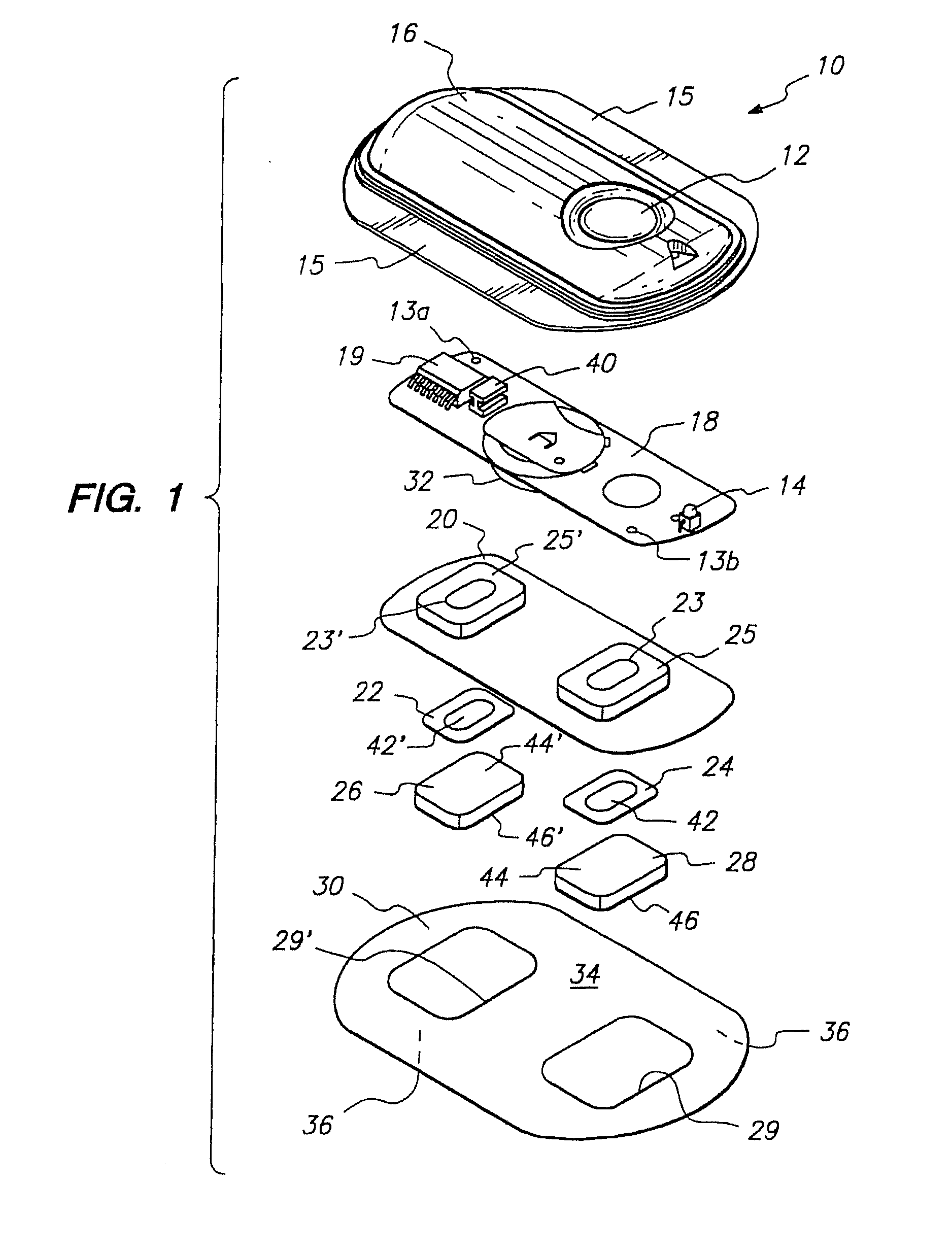Device for transdermal electrotransport delivery of fentanyl and sufentanil
a technology of sufentanil and sufentanil, which is applied in the direction of bandages, biocide, therapy, etc., can solve the problems of affecting the patient's mobility, affecting the patient's safety, and limiting the patient's movement and mobility, so as to improve the transdermal electrotransport delivery effect, improve the degree of efficiency of electrotransport delivery, and improve the patient's safety and comfor
- Summary
- Abstract
- Description
- Claims
- Application Information
AI Technical Summary
Benefits of technology
Problems solved by technology
Method used
Image
Examples
example 1
[0043] The following studies were conducted to determine the transdermal electrotransport dosing level required to achieve an acceptable level of analgesia in human patients suffering from moderate to severe post-operative pain. The study was conducted in 132 post-operative male and female patients who were expected to have moderate to severe pain after surgery, including orthopedic (shoulder, knee, long bone) and abdominal (urological, gynecological) surgeries. The patients wore one of two different electrotransport fentanyl HCl delivery devices on the upper arm for 24 hours following surgery. Both devices applied electrotransport current for a delivery interval of 10 minutes upon activating a push button switch on the device. The first device, worn by 79 of the 132 patients, applied an electrotransport current of 150 μA which delivered an average fentanyl dose of 25 μg over the 10 minute delivery interval. The second device, worn by 53 of the 132 patients, applied an electrotransp...
example 2
[0051] Two fentanyl hydrochloride-containing anodic donor reservoir PVOH-based gels were made having the following compositions:
Donor Gel Formulations:Materialwt %wt %Purified Water86.385.3Washed PVOH12.012.0Fentanyl HCl 1.71.7Hydroxy Methylcellulose—1.0
[0052] With both formulations, the water and PVOH are mixed at a temperature between 92° C. and 98° C. followed by the addition of fentanyl hydrochloride and subsequent further mixing. The liquid gel was then pumped into foam molds having a disc-shaped cavity. The molds were placed in a freezer overnight at −35° C. to cross-link the PVOH. The gels can be used as anodic donor reservoirs suitable for transdermal electrotransport fentanyl delivery to achieve patient analgesia.
[0053] In summary, the present invention provides a device for improving the transdermal electrotransport of water soluble salts of fentanyl and sufentanil. The electrotransport device preferably has a silver anodic donor electrode and a hydrogel based donor res...
PUM
 Login to View More
Login to View More Abstract
Description
Claims
Application Information
 Login to View More
Login to View More - R&D
- Intellectual Property
- Life Sciences
- Materials
- Tech Scout
- Unparalleled Data Quality
- Higher Quality Content
- 60% Fewer Hallucinations
Browse by: Latest US Patents, China's latest patents, Technical Efficacy Thesaurus, Application Domain, Technology Topic, Popular Technical Reports.
© 2025 PatSnap. All rights reserved.Legal|Privacy policy|Modern Slavery Act Transparency Statement|Sitemap|About US| Contact US: help@patsnap.com



